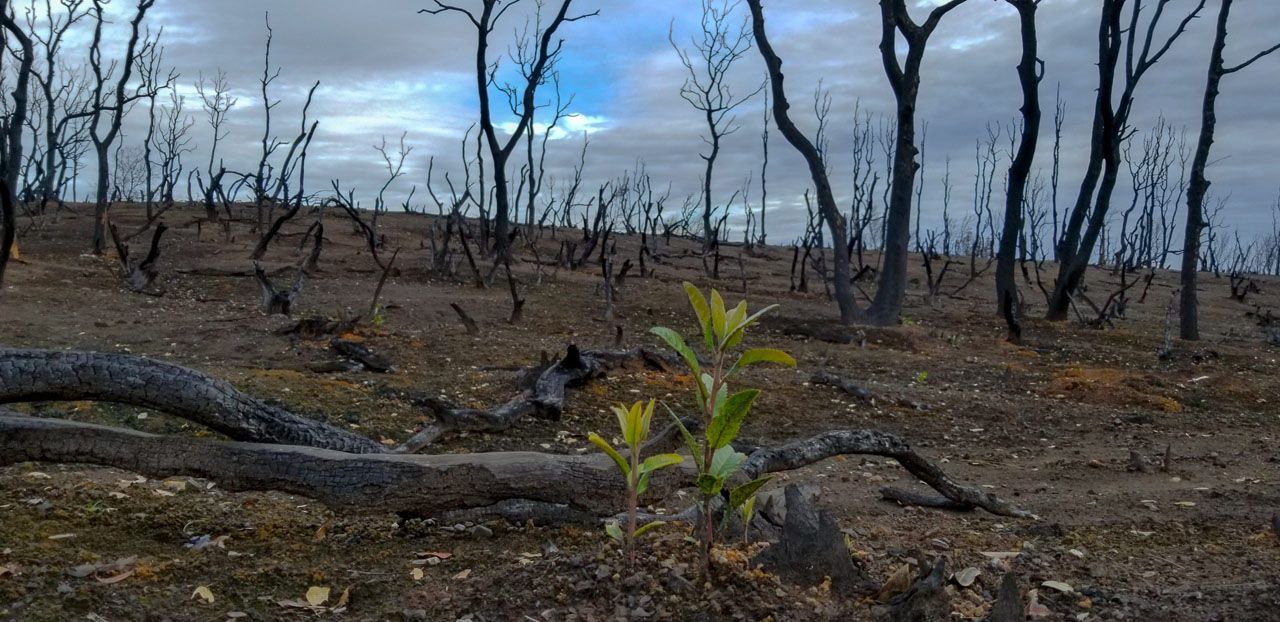Reminder...
Tomorrow's post: The Death of The Forest Service In the meantime, a reminder: Evergreen is inviting leadership-level contributions

Today is Monday, November 2, 2020. All Souls Day. Traditionally a day to remember and honor those who have gone before us. Maybe we should include a remembrance for the lands that our Congress is neglecting…
Tomorrow we find out which political party will be running our country for the next four years. It shouldn’t matter - given the horror of the West’s deadly wildfire pandemic.
The non-profit Evergreen Foundation has never taken a political position on anything. But for the last 34 years, we have done our best to help advance public understanding and support for science-based forestry and forest policy.
The focus of our research and writing has always been federally-owned forests in the West – forests managed principally by the U.S. Forest Service. Apart from the ratification of the Healthy Forests Restoration Act in 2003, ours has been a lonely and unsuccessful journey.
Of the many reasons for our lack of success, none looms larger than the regulatory morass created by Republican and Democrat-controlled Congresses that have favored a “leave it to nature” approach that, while well-intentioned, is the reason why western federal forests are dying and burning in wildfires for which we can find no ecological precedent in history.
If you feel the need to call these “climate fires,” please do so, but understand that the crisis we face has its roots in political and economic events that unfolded following the Second World War – long before the next Ice Age, global warming and climate change became celebrated fundraising causes within organizations that favor the “leave it to nature” approach.
This approach is unworkable in the “New West,” a sociological phenomenon that thrives on clean air, clean water, abundant fish and wildlife habitat and a wealth of year-round outdoor recreation opportunity – natural assets that have become political pawns in a “gotcha” game that pits the “leave it to nature” crowd against citizens who favor a collaborative approach to forest restoration that embraces diverse groups of forest stakeholders.
We see forest restoration – large scale thinning and prescribed fire - as the best tool for reducing the risks posed by the insect and disease infestations that are fueling our wildfire pandemic. Conservationists on the collaborative front lines favor increasing “pace and scale.” More acres treated faster.
This is easier said than done. It will only happen if or when Congress funds the forestry side of the Forest Service’s annual appropriation at the same level as it funds the fire side. Dollar for dollar. The current forestry side deficit in about $5 billion and the fire side budget need - grows annually.
These funding deficits will continue to grow until the underlying causes of our wildfire pandemic are addressed. Prolonged drought, insects and diseases have stressed our national forests beyond the limits of their endurance. Enter wildfire.
On the forestry side, the Forest Service is about 14,000 to 16,000 people short: engineers, landscape architects, biologists, botanists, soil scientists and foresters. Competent, inspired young men and women - who know how to traverse the regulatory maze imbedded in NEPA - the National Environmental Policy Act.
NEPA reform would be nice but it will take years and we don’t have years. Likewise with the Equal Access to Justice Act. Fortunately, the evidence shows that both laws can be legally navigated by trained professionals.
The larger bugaboo is a top-level Forest Service leadership culture that is so demoralized that it gives the appearance of leaning in the “leave it to nature” direction. I believe a closer look will reveal that many in the beleaguered agency are pushing the forestry envelope as hard as their underfunded budgets will allow.
The brain drain – loss of experienced personnel and vital skill sets – began on the forestry side not long after the U.S. government granted threatened species status to the northern spotted owl in 1990. It accelerated through four presidential administrations – two Republican and two Democrat – with little to no resistance from the Forest Service. More money for battling forest fires. Less money for reducing the risk of wildfire. So much for the agency’s time-honored mission: “Caring for the land and serving people.”
This long festering problem is probably best resolved by moving the Forest Service out of the Department of Agriculture and into a new cabinet level Department of Natural Resources that brings the USFS, National Park Service, U.S. Fish and Wildlife Service, National Marine Fisheries Service and the Bureau of Land Management under one banner. But this merger will take time and time is not on our side.

The immediate need is to rebuild the forestry side of the Forest Service. This means that Republicans and Democrats in the next Congress need to find an extra $5 billion in Fiscal 2021. Funds must be specifically allocated for forestry staffing and forest management – not wildfire.
I don’t know how long it will take the Forest Service to regain its forestry footing, but 10 years seems reasonable. So, $50 billion. Pocket change for the Green New Dealers that climate change has inspired.
Social media posts and articles by California residents reveal that public anger has reached the boiling point. This is a good sign.
Minus more outrage, the West’s forest legacy will continue to die and burn in devastating wildfires – a sure sign that “nature” doesn’t give a damn about human need or political necessity.
Jim Petersen, Founder and President, the Evergreen Foundation
You 100% tax-deductible subscription allows us to continue providing science-based forestry information with the goal of ensuring healthy forests forever.